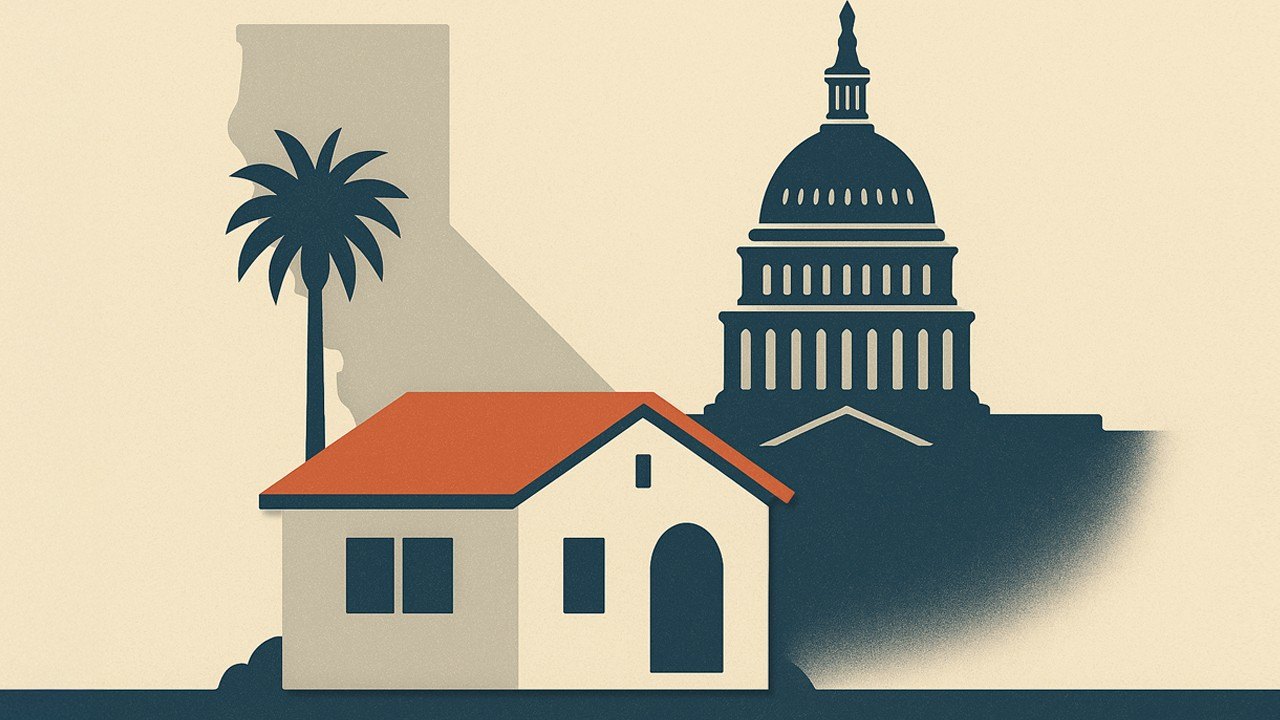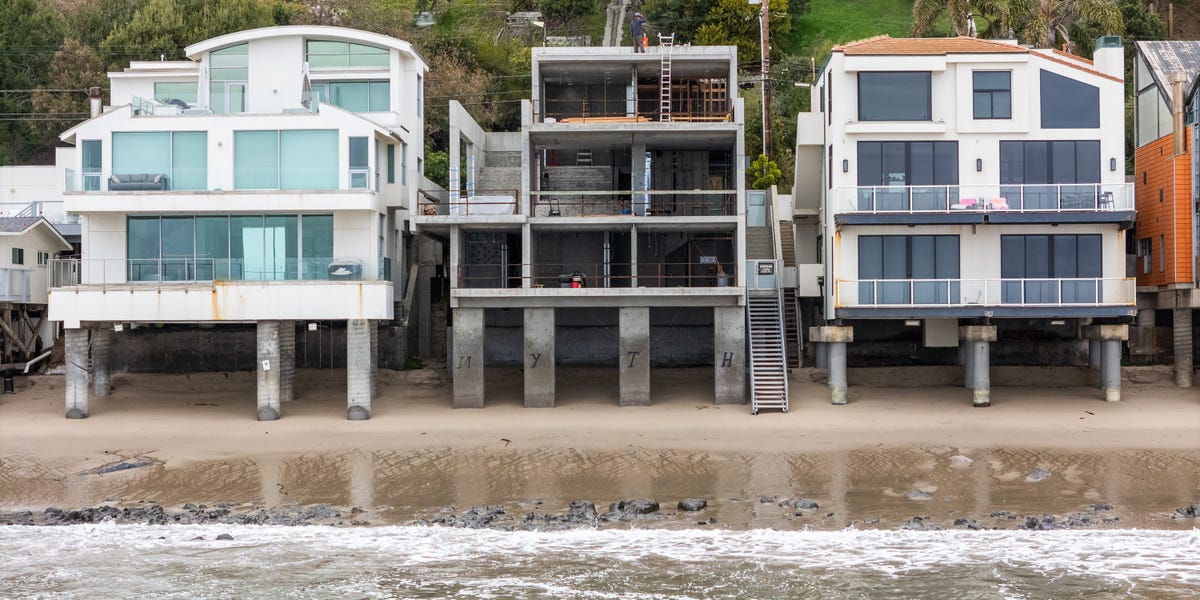T
he federal shutdown is unsettling housing markets in places like Florida, yet California’s market shows little sign of turbulence. “Since the shutdown began, California’s housing scene has stayed largely unchanged,” notes Realtor.com® senior economic research analyst Hannah Jones. “Year‑over‑year new listings are rising, time on market remains steady, and inventory growth is slowing in line with national trends.”
California’s vulnerability is clear. The state ranks sixth nationwide for FHA and VA loan volume, ninth for USDA housing investment, and sixth for active National Flood Insurance Program (NFIP) policies—all federal programs now stalled or delayed as the shutdown enters its third week. Real estate accounts for 17.6% of California’s economy, contributing roughly $680 billion to GDP and supporting hundreds of thousands of construction, real‑estate, and home‑service jobs (National Association of Realtors®).
The longer the shutdown persists, the greater the pressure. “Each day the shutdown continues compounds these challenges,” says NAR Executive Vice President and Chief Advocacy Officer Shannon McGhan. “Millions of Americans face uncertainty about closing dates, delayed access to affordable housing, and higher costs as markets react to instability. For the broader economy, it risks slowing growth in one of the country’s most important sectors.”
**California’s apparent calm**
Current data points to stability: new listings outpace last year, time on market is largely unchanged, and inventory growth is decelerating, mirroring national patterns. This steadiness reflects California’s buyer mix. Most borrowers use conforming loans, which remain unaffected by the shutdown, while cash and jumbo buyers keep active in high‑priced metros such as Los Angeles, San Francisco, and San Jose. “Buyer demand remains intact in California, as high‑income, cash and jumbo buyers—common in high‑priced California metros—aren’t directly hit by furloughs,” Jones explains.
A key federal service still functioning is the IRS’ Income Verification Express Service (IVES), which lets lenders verify tax information and keep mortgage approvals moving. Curtis Knuth, CEO of credit‑reporting firm Service 1st, reports no disruption in the thousands of tax transcripts requested weekly for mortgage vetting. “For the divisions we work with, there’s no impact. Normal turnaround times are standing,” he says. Knuth notes that IVES is self‑funded by user fees, so it doesn’t require a new congressional spending bill to continue operations. COO Lisa Binkley adds that about 97% of IVES requests are processed within three days, matching pre‑shutdown speeds.
**Early signs of strain**
Beneath the surface calm, early fractures appear. “I’ve seen a small cooling over the past couple of weeks in buyer enthusiasm, especially for first‑time buyers using FHA or USDA financing,” says Bastien Wissmann, New Properties & Investment Specialist. While these sales represent a small portion of California’s market, they’re significant. In June 2025 alone, California buyers secured $1.9 billion in FHA loans—the third‑highest national volume (HUD’s Single‑Family Portfolio Snapshot). Less than 1% of California homebuyers rely on USDA loans, but those who do often have few alternatives. Since 2024, the state has received nearly $20 billion in USDA funding for single‑ and multifamily housing, ranking ninth nationally for total investment.
Unlike conforming loans, FHA and USDA programs depend on federal staffing and approvals, now frozen. “The lack of clarity about government operations breeds caution, even among qualified buyers who would otherwise be eager to move ahead,” Wissmann says. Sellers, meanwhile, are adjusting rather than retreating. “Most are willing to extend the closing process a little longer or notch prices down slightly to keep deals chugging along, an acknowledgment of caution and optimism,” he adds.
**Builders feel the drag**
While the shutdown’s impact has been muted for the market overall, builders and developers are starting to feel the strain. “Builders and developers are beginning to complain about the slower processing of permits and inspections,” Wissmann notes. These delays can ripple through projects, especially multi‑unit residential developments. Many permits are issued by local authorities, but sometimes federal coordination is needed to move the process forward.
Russel Riggs, NAR’s senior regulatory representative, told Realtor.com last week that the impact has been minimal so far, but “the longer the shutdown goes, the more those reviews and permitting procedures are going to start clogging up.” After four weeks, the effects should become clearer.
Gary Mkrtichyan, a developer and general contractor with Opus Builders in Los Angeles, reports significant delays since early October. He’s overseeing new‑home projects in Hollywood that require city‑managed infrastructure—sewer connections, fire hydrant relocations, and more. Routine requests have gone unanswered. “I’ve never seen this type of slow movement,” he says. The delays can be costly; Mkrtichyan has spent nearly $20,000 on wasted time because essential approvals are delayed.
**Hidden flood risk**
The NFIP’s suspension has raised concerns about flood insurance, especially in wildfire‑scarred regions. Burned hillsides become more vulnerable to flooding—without vegetation, the ground can’t absorb rainfall, heightening flood risk even for properties outside designated Special Flood Hazard Areas. FEMA estimates flood risk remains significantly higher for at least five years after a major wildfire, yet only about 4% of homes in wildfire‑affected states carry federal flood insurance.
Less than a year after the devastating Palisades and Eaton fires, this is a serious problem for Californians still rebuilding. With the NFIP stalled, no new or renewed policies can be issued. For buyers in high‑risk areas, the bureaucratic pause can halt home closings. “If the shutdown lingers, home sales could see delays related to insurance. For homes needing a new/renewed flood insurance policy, the suspension of the NFIP puts closings at risk and slows down transaction activity,” Jones explains.
**Potential lag effects**
California’s housing data looks calm now, but the market’s interconnectedness means the effects of a prolonged freeze are unlikely to stay invisible for long. The real risks emerge later, as the slowdown ripples through listings, loans, and sentiment. “If homes sit longer due to mortgage approval or insurance challenges, delistings or price reductions may increase,” says Jones. This is especially relevant if consumer sentiment shifts or anxiety over the shutdown grows, convincing some buyers to hold off.
The real‑estate sector accounts for roughly 18% of California’s $4.1 trillion economy—nearly one‑sixth of the entire U.S. GDP. Each median‑priced home sale generates about $230,000 in local economic activity and supports three jobs, from contractors and appraisers to movers and furniture retailers (NAR research).
California’s apparent stability may mask a lag effect—a market that looks steady on the surface but could start showing cracks in the coming weeks. If that happens, the state’s housing slowdown won’t stay local for long.
Allaire Conte is a senior advice writer covering real‑estate and personal‑finance trends. She previously served as deputy editor of home services at CNN Underscored Money and was a lead writer at Orchard, where she simplified complex real‑estate topics for everyday readers. She holds an MFA in Nonfiction Writing from Columbia University and a BFA in Writing, Literature, and Publishing from Emerson College. When she’s not writing about homeownership hurdles and housing‑market shifts, she’s biking around Brooklyn or baking cakes for her friends.















